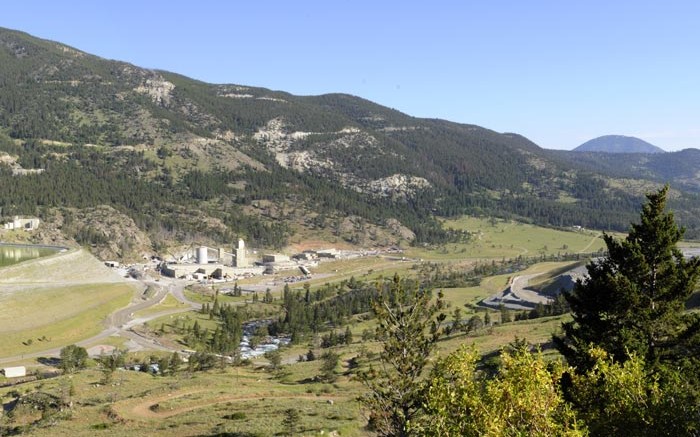VANCOUVER — Denver-based Stillwater Mining (TSX: SCW.U; NYSE: SWC) has made tough decisions in response to falling platinum group metal (PGM) prices, including layoffs and a focus on cost control that will hopefully better position the company for a recovery in prices.
In mid-August the company announced plans to reduce the workforce at its Stillwater PGM mine and Columbus processing facility in Montana by 119 employees, or 7%, after a protracted negotiation with the USW International Union Local 11-0001. Stillwater submitted what it called a “best and final” contract offer in late July, which included no increase in base wages for the first two years of the agreement and an adjustment in incentive programs to “better align employee and shareholder outcomes.”
The company’s unionized workforce rejected the proposal, though employees still worked under terms of the expired contract. The new labour agreement is slated for early September.
Stillwater employed 1,600 people at Sillwater and Columbus to start the year, and calculates the new round of layoffs should result in savings on labour costs of US$20 million per year, or US$40 per oz. palladium and platinum produced.
During the second quarter Stillwater processed 152,000 oz. recycled palladium, platinum and rhodium at its facility, which marks a 13% increase in tolling activities, compared to the same period in 2014. Meanwhile, mined palladium and platinum production totalled 127,000 oz. at all-in sustaining cash costs of US$785 per oz.
A major maintenance program in June reduced gross production and hiked operating costs at the mine.
President and CEO Mick McMullen noted during a second-quarter conference call that Stillwater’s tolling activities account for “over half the business,” which is an increase from last year, when the segment accounted for 15% of revenue.
The layoffs follow a steep drop in the platinum-palladium basket price that has vapourized the company’s profit margins. Stillwater is targeting all-in sustaining costs of US$725 per oz., while the basket price in mid-August sat at US$701 per oz.
McMullen says the PGM industry faces “significant headwinds,” with a lack of economic mines and a perceived supply deficit in palladium markets.
“We believe the industry needs some supply discipline from loss makers,” he said. “There appears to be some movement there, as economics begin to dictate actions. Many [PGM producers] have stressed balance sheets, and we believe that the market situation won’t be sustainable over the medium to long term. And we are still seeing pretty strong palladium demand, despite a little bit of softening. I would say auto demand remains robust and auto demand accounts for three-quarters of the end use.”
To cope with steeply dipping PGM prices, the company modified its mine plan to focus on the most “profitable mineralized areas” at the Stillwater operation, and aimed to maximize production from its nearby East Boulder mine.
McMullen described East Boulder as being a “consistent operation” that produces at a 66% higher rate in terms of “tonnes milled per employee,” when compared to Stillwater.
“The geology is easier at East Boulder, but we do believe that it provides a benchmark for Stillwater. We think that the current market environment demands further action to improve the cost structure of the company as a whole,” he added.
Stillwater and East Boulder are both part of the rich J-M Reef PGM deposit in the Beartooth Mountains of south-central Montana. Geologically, the Stillwater Layered Igneous Complex holds a succession of ultramafic to mafic rocks from a large complex-magma body. The molten mass’ chemical constituents crystallized slowly and sequentially, with heavier mafic minerals settling faster at the base of the cooling complex.
Stillwater’s most effective mining method is determined by geological characteristics of each stope, or mining excavation area, with the company using different techniques at both mines, including: ramp and fill, sub-level stoping and captive cut and fill.
BMO Capital markets has an “outperform” rating on Stillwater and a US$14-per-share price target, and calls the company a “preferred investments in global metals and mining,” due to its exposure to a recovery in palladium prices, healthy balance sheet and focus on controlling costs and maximizing core-asset value.
“Layoffs and labour unrest is never really a ‘good’ thing, in our opinion, but unfortunately, the drop in PGM prices is forcing the issue,” BMO analyst David Gagliano noted on Aug. 17. “Stillwater management is taking aggressive action in the poor pricing environment aimed at preserving cash and leaving ounces in the ground until better prices emerge.”
Meanwhile, Bank of America analysts are dubious about auto demand in China, where analyst Jeff Chung expects personal vehicle sales to drop between 5% and 10% year-on-year in July. Bank of America has an “underperform” rating on Stillwater, with a US$9.60-per-share price target.
“Downside risks to our price objective include: slower end-market demand than expected, particularly from the auto sector, which accounts for 70% of palladium demand; possible disruptions among union workforce at the Stillwater complex; difficulties in executing development projects; and input cost escalation,” analysts Matthew Griffiths and Oscar Cabrera wrote in August.
Stillwater has traded within a 52-week range of US$8.37 to US$19.63, and closed at US$9.87 per share at press time. The company ended the second quarter with US$531 million in cash and equivalents, and has 121 million shares outstanding for a $1.1-billion market capitalization.


Be the first to comment on "Stillwater retrenches in hopes of PGM recovery"